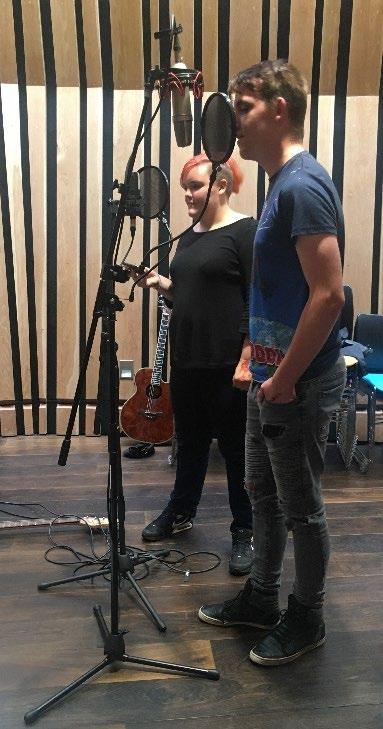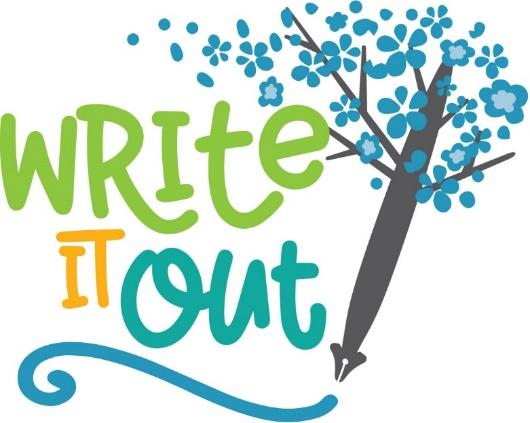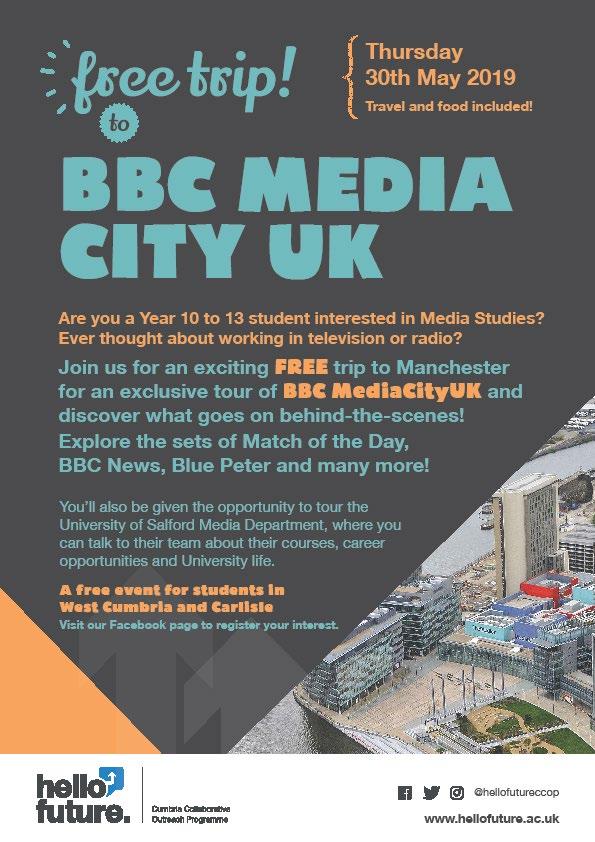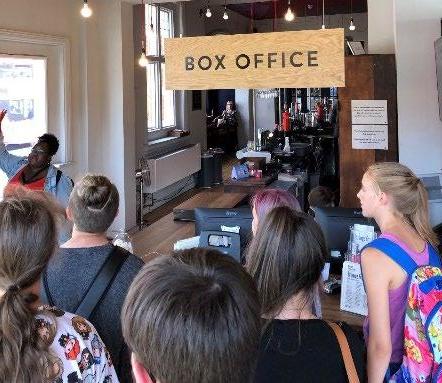
3 minute read
Aspatria Photography Project
Aspatria Photography Project with Dreamscheme
We worked with a group of young people from West Cumbria who have an interest in photography and media. The learners joined us for a visit to the University of Cumbria (UoC) Media Department. During their visit, they participated in a photography workshop led by Senior Lecturer, Sarah Bonner. During the workshop, the group had the opportunity to set up their own still life model, capture their image using the professional level equipment and develop the final design in the dark room. The learners toured the department’s facilities and the wider university campus, which helped them to get a feel of what life as a media student is really like.
Advertisement
Following the workshop with UoC, the learners visited Manchester to experience ‘Sixteen’, an exhibition presented at Manchester Central Library. The multimedia exhibition asks, ‘What is it like to be sixteen years old now?’ Photographer Craig Easton developed the concept following his work with sixteen year olds at the time of the Scottish Independence Referendum; the first and only time that sixteen year olds were given the vote. He, and other documentary portrait photographers worked with young people from all across the country to make a visual vox pop. The young people led their visit to Manchester using Google Maps to locate their destination, as well as finding a spot for lunch. After lunch, the group visited Inflata Nation, an inflatable theme park where learners had the chance to conquer the total wipe out red balls and vertical slides. This aimed to facilitate rapport between members of the group.
The next stage of the project pulled together these new photography skills and experiences from the exhibition, to create, organise and host their own public exhibition back in Aspatria in partnership with Dreamscheme. The learners chose the theme ‘Old and New Aspatria’ and used historic photographs and archived materials of their town, alongside their own work to track both the changes over time and the things that have remained the same. The learners invited friends, families, teachers and members of the local community to see the work and presented their project. Intervention Aims To provide learners with an insight into university level study of a subject they are passionate about. To develop the learners cultural capital through the a trip to a city, incorporating travel via public transport and a trip to a cultural location (Manchester Central library). To support confidence building and teamwork skills as they worked on a project from beginning to end.
Practitioner Voice
“A key strength of the project was that it was built around an expression of interest from the learners, so it had the learners at the centre from its inception. This meant the learners were incredibly engaged from the outset, allowing their passion to grow with each stage of the project. This growth was incredibly rewarding to watch.
After working closely with the learners for a sustained period, we were able to see their confidence, enthusiasm and self-belief heighten with each interaction. At the final exhibition, the learners confidently introduced their own work, welcomed strangers by shaking their hands and discussed their achievements with pride. In comparison to our first meeting with them, this demonstrated the positive impact the project had on these learners.
The personalised photobooks for the learners to keep were received incredibly well. This kind of personal touch really helped cement the relationships we built over the course of the project and allowed the learners to have something tangible to keep and show.
Over the course of the project, our sustained contact with the learners in a non-academic setting facilitated trust between young people and the staff. It is incredibly important to note how effective we found changes to the setting to be in forming meaningful relationships where the young people could be open and develop their skills” .








